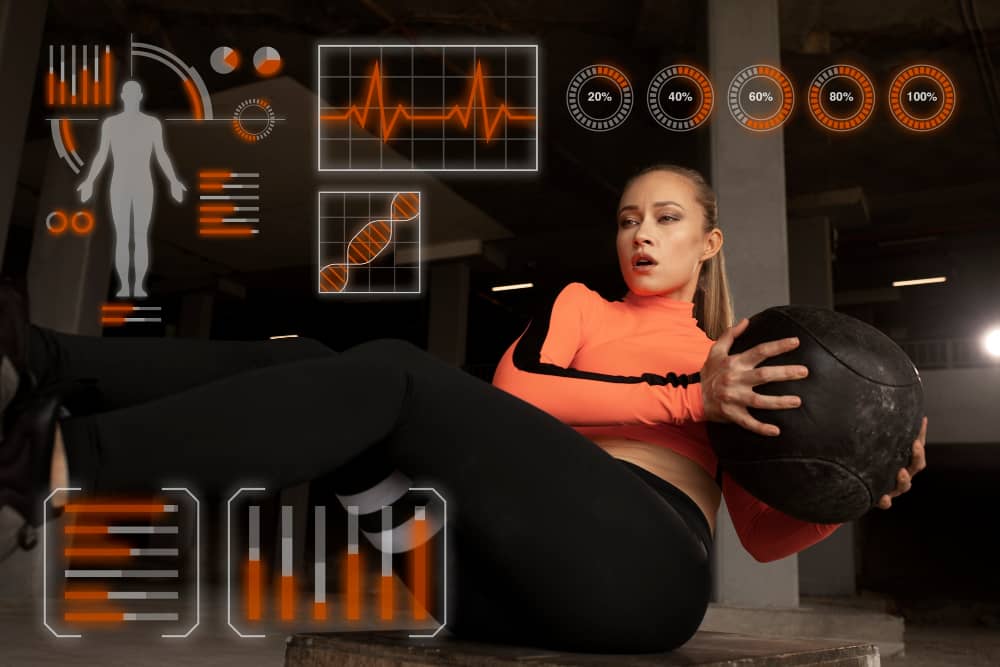The difference between winning and losing often boils down to the littlest factors. Athletes are always trying to find ways to perfect their techniques and improve their performances. Augmented reality (AR) coaching is changing this paradigm by providing real-time feedback for technique correction. Athletes can make alterations instantly during training with the goal of enhancing skill acquisition. In this article, let us consider how the world of sports is changing with AR virtual coaches.
What are virtual coaches in sports?
Sports virtual coaches are AI systems that give athletes real-time feedback specific to their individual needs. They can be integrated within mobile apps, wearable gadgets, or even AR glasses and provide immediate feedback on how a person’s technique could be improved. Unlike traditional coaching, a virtual coach doesn’t need the presence of a teacher to give a data-driven analysis of performance.
These virtual trainers are able to collect and analyze a huge amount of data. They have almost as much data as you can find by doing a MelBet log in. There, you can bet on thousands of sporting events at the best odds, and the availability of various historical data will help you make more accurate predictions. So, the principle is similar for virtual trainers; they analyze data and make predictions about what is needed for an athlete to improve something in his body or exercise performance. But let’s still consider everything in order and in more detail.
The role of real-time feedback in athletic training
It is highly beneficial for an athlete to be monitored during practice in order to provide real-time feedback to assist in improving performance while also mitigating the risk of injury. Virtual coaches are especially proficient in providing this feedback through:
- Instant adjustment assistance: Virtual coaches point out an athlete’s mistake in posture and body alignment during exercises in visuals, thus minimizing the possibility of straining the body.
- Improvement of the athlete’s performance: Athletes can use feedback to perfect the way they do things, such as runners perfecting how they lengthen their strides and swimmers perfecting how they stroke.
- Mitigating injury: Virtual systems enable an athlete to refrain from engaging in repetitive, unchanging motions that could cause injury, like squatting with poor knee alignment.
- Quicker skill acquisition: Prompt changes enable an athlete to implement new skills promptly through immediate post-error adjustment, as opposed to implementing the adjustments later.
This feedback helps ensure ease in an athlete’s progress and sweatless effectiveness in their training. This allows them to show their best results and minimize the number of injuries. And if you don’t want to miss even more interesting facts and news, subscribe to MelBet Insta. Here is everything a sports fan needs, and betting fans will find promo codes there that will make their bets even more profitable!
Virtual coaching: A game-changer for remote athletes
Virtual coaching holds extraordinarily high value for athletes who work remotely and are far from in-person coaches. Because of such geographical hindrances, mutual time constraints, or sheer personal preference, many athletes find it quite difficult to avail themselves of regular, personalized coaching. Enter virtual coaches, which effectively provide immediate feedback anywhere an athlete trains.
This instantaneous feedback helps cyclists improve their cadence and power while on a ride with Zwift, the popular online cycling platform. In the same way, Peloton live streams and offers on-demand classes with real-time performance feedback, enabling users to adapt their technique on the spot. Thanks to virtual coaching, athletes worldwide can access professional coaching at their convenience; this has greatly democratized access to quality coaching, especially for those who have fallen off the radar in underserved or remote regions.
How AR technology helps correct movements instantly
Virtual coaching becomes more effective through augmented reality, which displays corrective visuals right over athletes’ physical surroundings. The athletes receive visual feedback in real-time, which lets them fix their technique and form while training. Tennis players who wear AR glasses can see their own swings alongside a perfect demonstration of the swing as it appears next to their real-time performance.
PlaySight provides professional tennis athletes, including Serena Williams, with AR technology, which simultaneously shows their actual movements with the correct form to identify training areas requiring improvement. Golftec employs AR technology to display an optimal swing trajectory on recorded swing videos, which helps athletes identify their corrective needs through visible indicators. The combination of real-time data and graphical direction helps players achieve faster, more precise technique enhancements, which leads to better results within their training sessions.
Examples of AR feedback systems used in sports training
The world of sports training is continually evolving through innovative AR feedback systems that are changing everything. A few systems are as follows:
- PlaySight: A tennis player can analyze their performance in real-time with PlaySight as it offers an analysis feature. A player can see their strokes alongside the ideal movements side by side, which helps them improve.
- Golftec: Golfers find this system helpful as it overlays swing paths and embeds angle indicators using AR during practices. This helps every golfer refine their form to achieve greater accuracy and cover greater distances.
- Nike Training Club: This app assists the user by using AR visuals to demonstrate correct form while executing exercises using squats and lunges. It also gives the user feedback on the angle and depth of their alignments.
- Veo: This platform assists soccer coaches as it helps AR enable instantaneous criticism of a player’s movement from a coaching perspective. The coach can assess the player’s positioning, ball control, and teamwork all in an instant.
Providing real-time analysis from a sporting professional’s perspective helps an athlete fix their mistakes on the spot. They maximize the benefits of their training and sharpen their skills to match their needs.
How virtual coaching can revolutionise team sports
Virtual coaching is especially beneficial in team sports, where the movements and techniques have to be synchronized among players. Thus, it makes it possible for trainers to assess and provide real-time feedback on individual players’ performance while tracking team performance with the help of AR-powered systems. This enables one to effect on-the-fly correction during practice, optimizing personal skills development and holistic team strategy simultaneously.
For instance, Hudl is used by many teams in football, basketball, and soccer to analyze real-time player performance on movement patterns, positioning, and tactical adjustments. With instant feedback, players are able to implement changes right away during practice sessions instead of waiting for an assessment after training has already closed. This viva voce approach allows for adaptive changes while also honing their tactical execution when it matters in games.
The future of technique correction: AR and virtual coaching
AR technology has changed literally with a bang, particularly for future virtual sports coaching. New precision, tailor-made training systems, seemingly just at the edge, will see exact AI and machine-learning feedback for each athlete’s own requirements. Advanced wearables and AR glasses will be integrated to allow corrections of a wide array of movements, from hand-eye coordination to complex body positioning. Accepting that athletic progress has just entered a new territory where technology not only assists but accelerates development!








